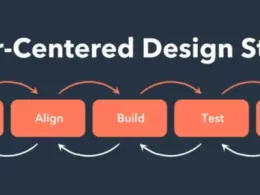Introduction
The need for proficient graphic designers is steadily increasing. Whether you’re an aspiring artist or considering a shift to a creative profession, the path to becoming a graphic designer can be both thrilling and fulfilling. In this thorough guide, we will outline ten straightforward steps to guide you toward achieving success as a graphic designer.
1. Define Your Passion
2. Acquire the Necessary Skills
3. Formal Education or Self-Taught?
4. Build a Strong Portfolio
5. Gain Practical Experience
6. Stay Updated with Industry Trends
7. Develop a Personal Brand
8. Network and Collaborate
9. Hone Your Communication Skills
10. Never Stop Learning
1. Define Your Passion
The bedrock of any prosperous career is a profound passion. Before immersing yourself in graphic design, allocate some moments to delve into which facets of design genuinely enthrall you. Are you drawn to logo design, web design, illustration, or something entirely different? Identifying your passion will chart the course for your creative journey.
2. Acquire the Necessary Skills
The field of graphic design necessitates expertise in various software and tools. Investing in mastering industry-standard software, such as Adobe Photoshop, Illustrator, and InDesign, is essential. Furthermore, delve into other design-related competencies like typography, color theory, and layout design. Online courses, tutorials, and books offer invaluable resources to enhance your skills in these areas.
3. Formal Education or Self-Taught?
When it comes to graphic design, there are two paths you can take. Some opt for formal education at design schools or colleges, while others prefer self-taught. It’s important to note that both avenues have the potential to lead to success. Consider your learning style, budget, and time commitment to make the right choice. These factors will help you determine which approach best aligns with your needs and goals.
4. Build a Strong Portfolio
Your portfolio serves as your calling card in the world of graphic design. It’s crucial to assemble a collection of your finest work to exhibit your skills and unique style to potential clients or employers. Ensure you incorporate various projects to showcase your versatility and capabilities. This diverse range of work will highlight your ability to tackle different design challenges.
5. Gain Practical Experience
Internships, freelance projects, or entry-level positions offer valuable hands-on experience in graphic design. These opportunities enable you to put your skills into practice, establish a network of contacts, and gain insights from experienced industry professionals.
6. Stay Updated with Industry Trends
The realm of graphic design is in a constant state of evolution. Staying updated with the latest trends, devices, and techniques is essential to maintain competitiveness. You can achieve this by following design blogs, participating in conferences, and subscribing to design magazines. This way, you’ll always be in the know and at the forefront of your field.
7. Develop a Personal Brand
For graphic designers, establishing a personal brand is critical to success. Creating a professional online presence, including a website and social media profiles, is important. Maintaining consistency in your branding across these platforms will set you in a competitive market.
8. Network and Collaborate
Networking is a potent asset for graphic designers. It involves attending industry events, joining online design communities, and initiating connections with fellow designers for potential collaborations. Building these relationships can open the door to exciting projects and valuable opportunities in the field.
9. Hone Your Communication Skills
In the world of graphic design, effective communication is paramount. It’s essential to grasp and address client requirements, offer clear rationales for your design decisions, and receive constructive feedback with grace. Strong communication skills differentiate you as a true professional in this field.
10. Never Stop Learning
Graphic design is a lifelong learning adventure. Keep enhancing your skills, trying fresh ideas, and drawing inspiration from various sources. Growth and adaptability are key to achieving long-term success in this dynamic field.










